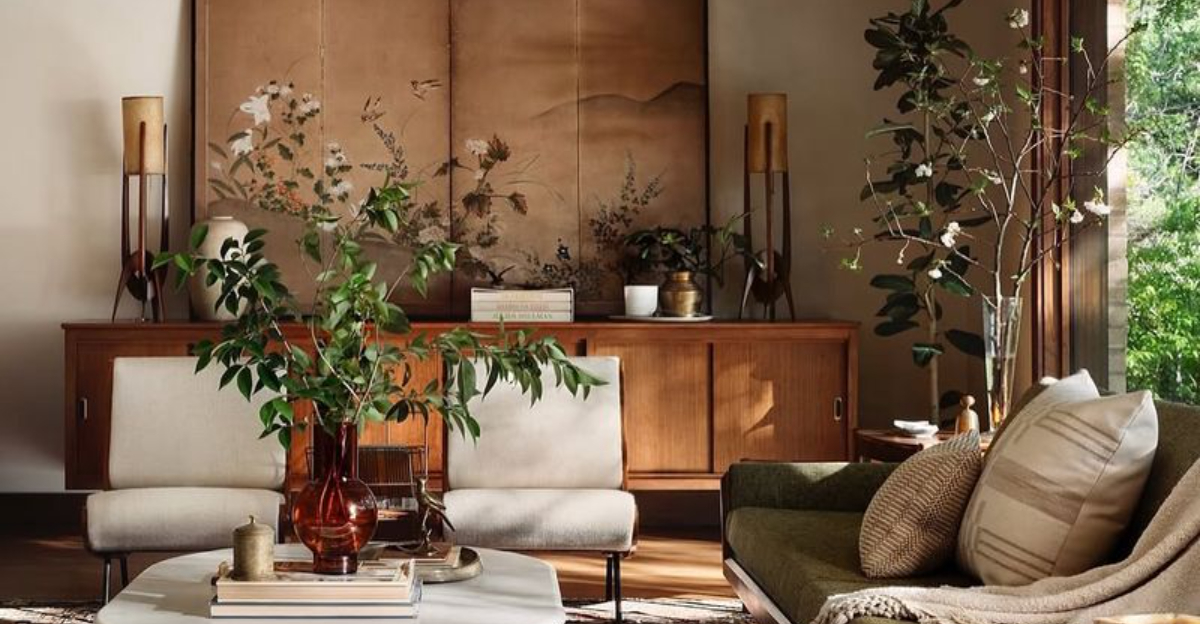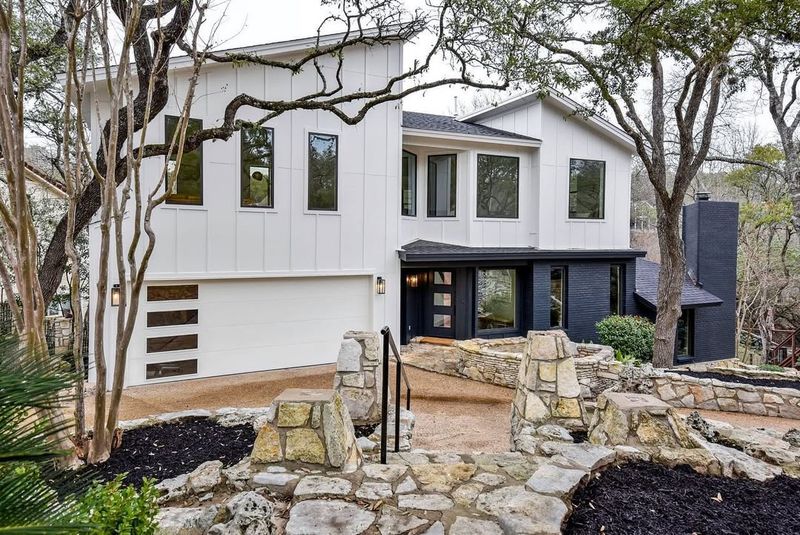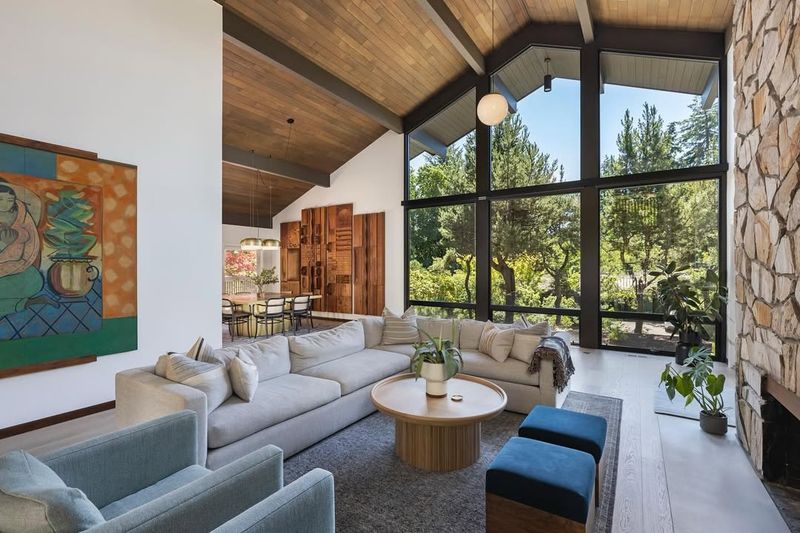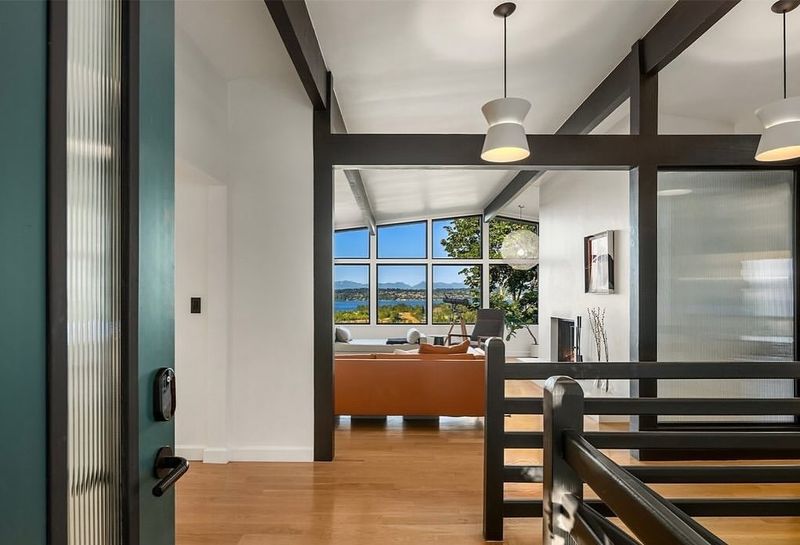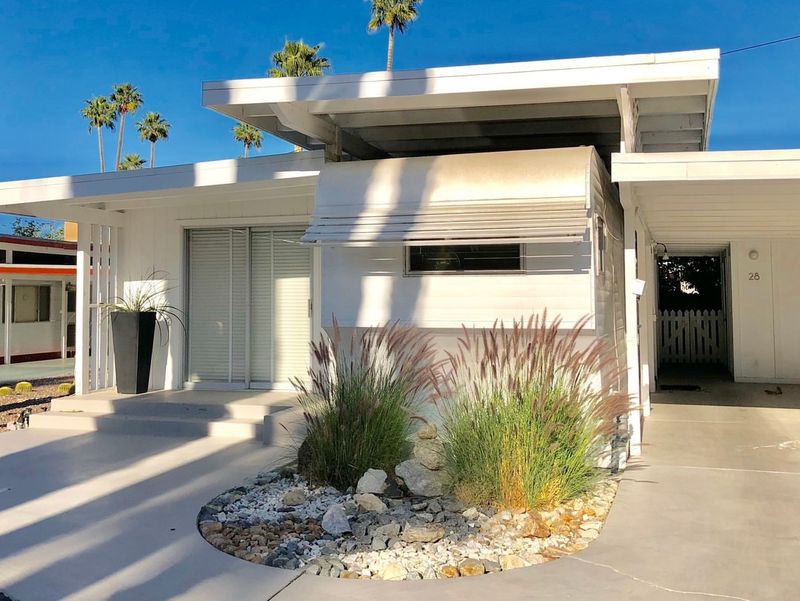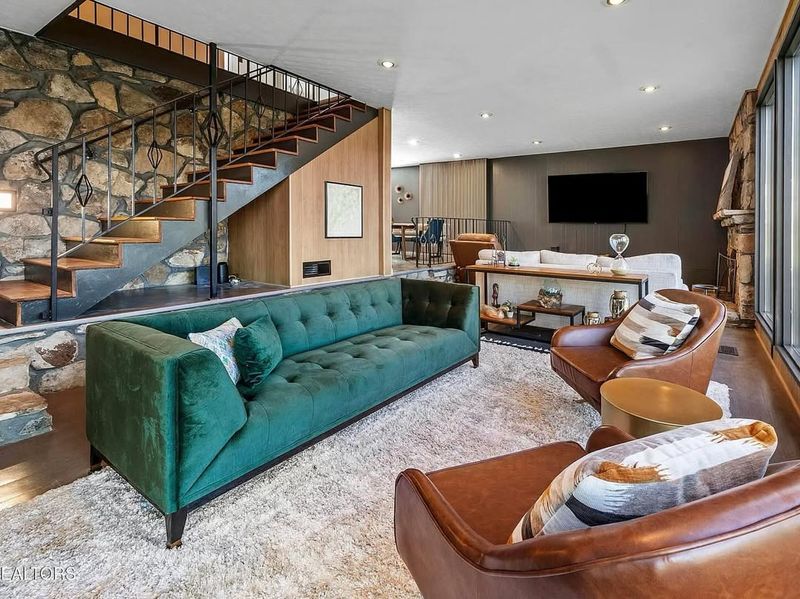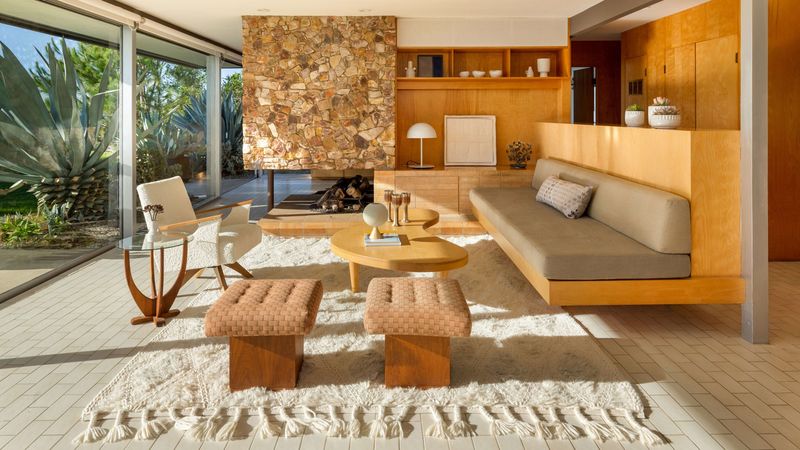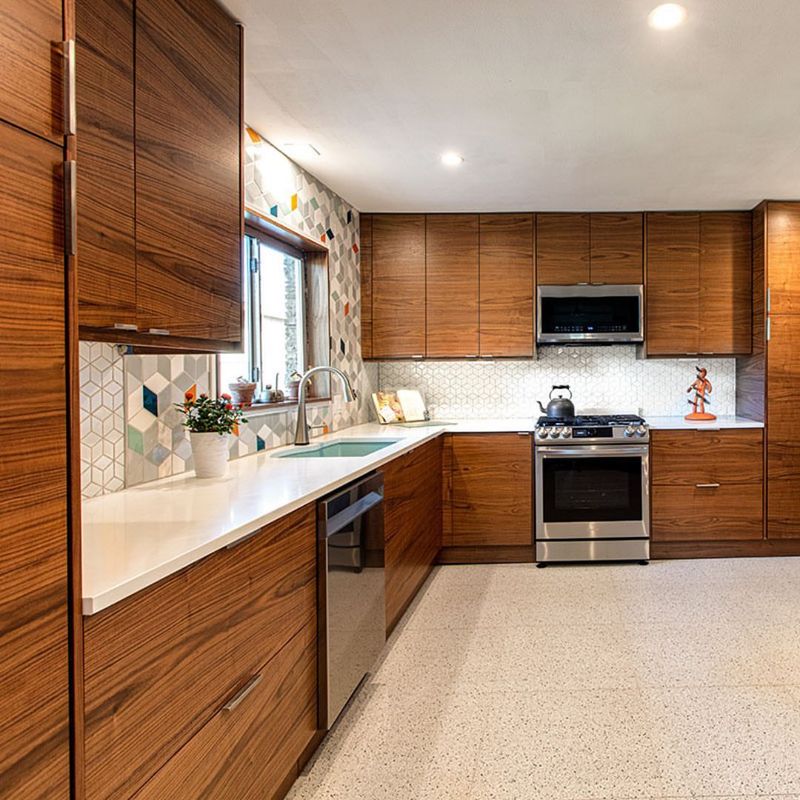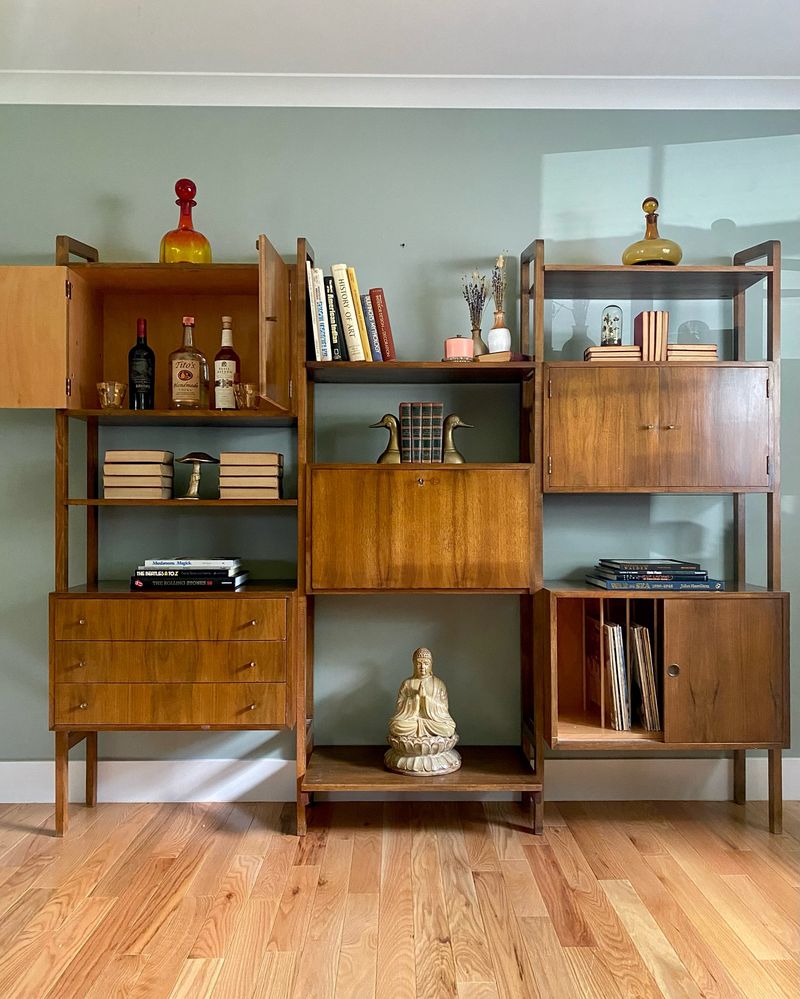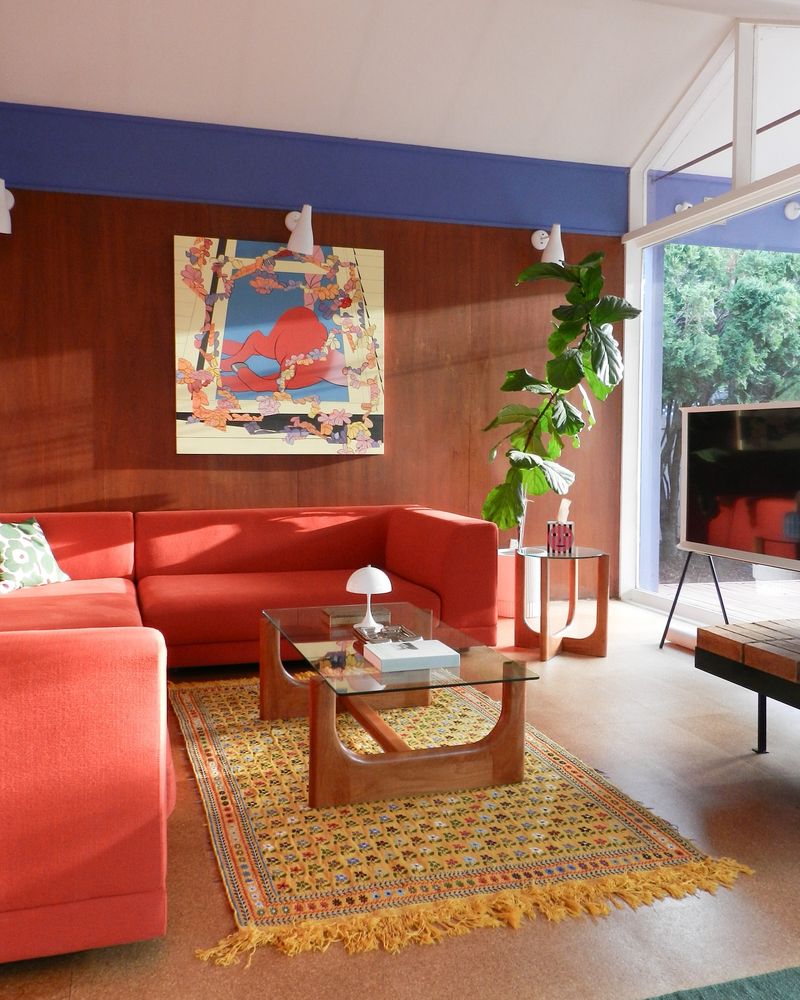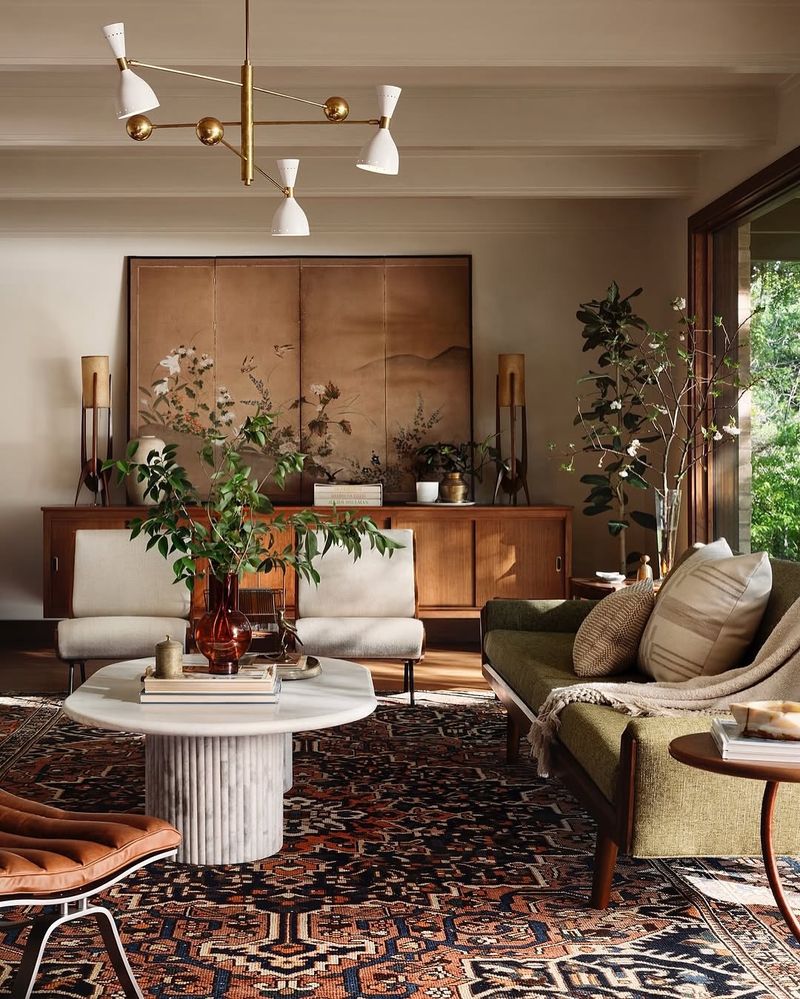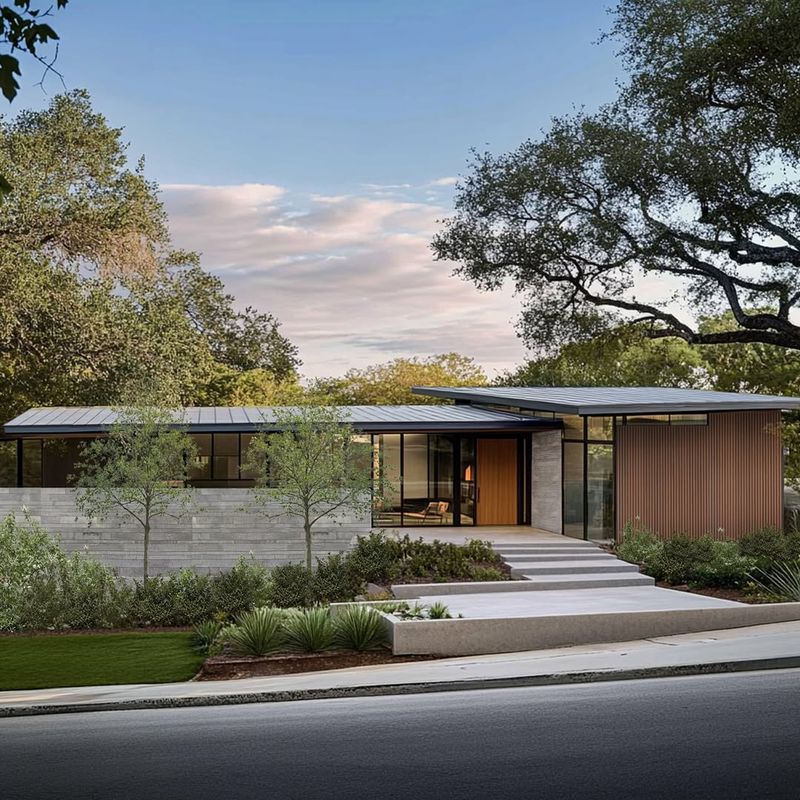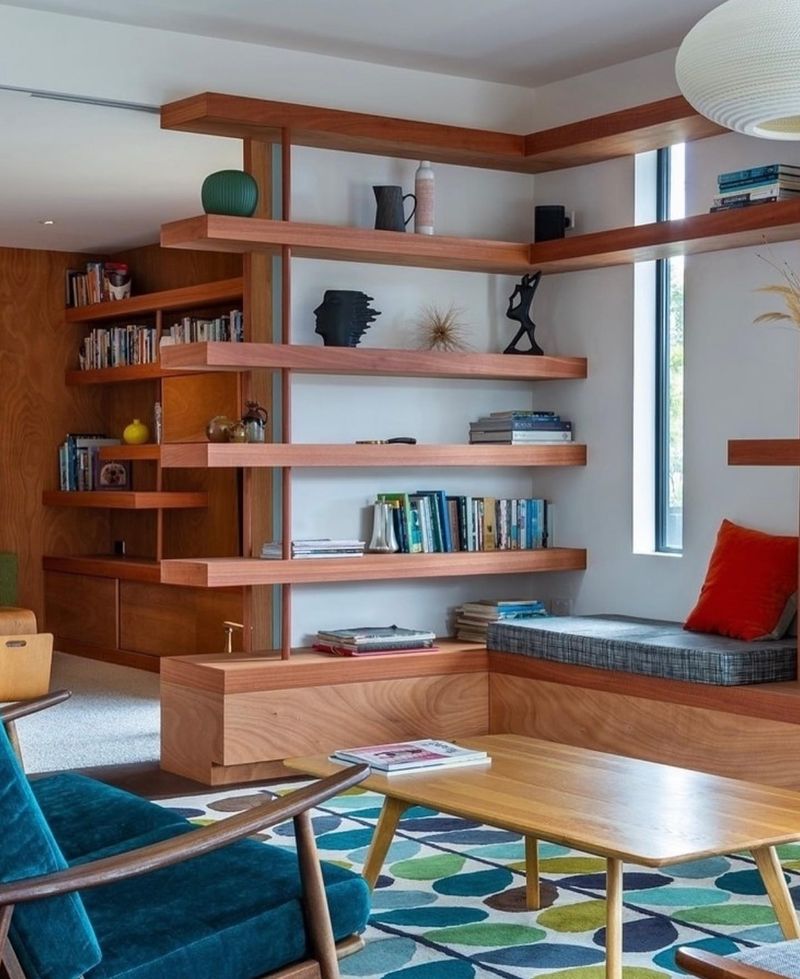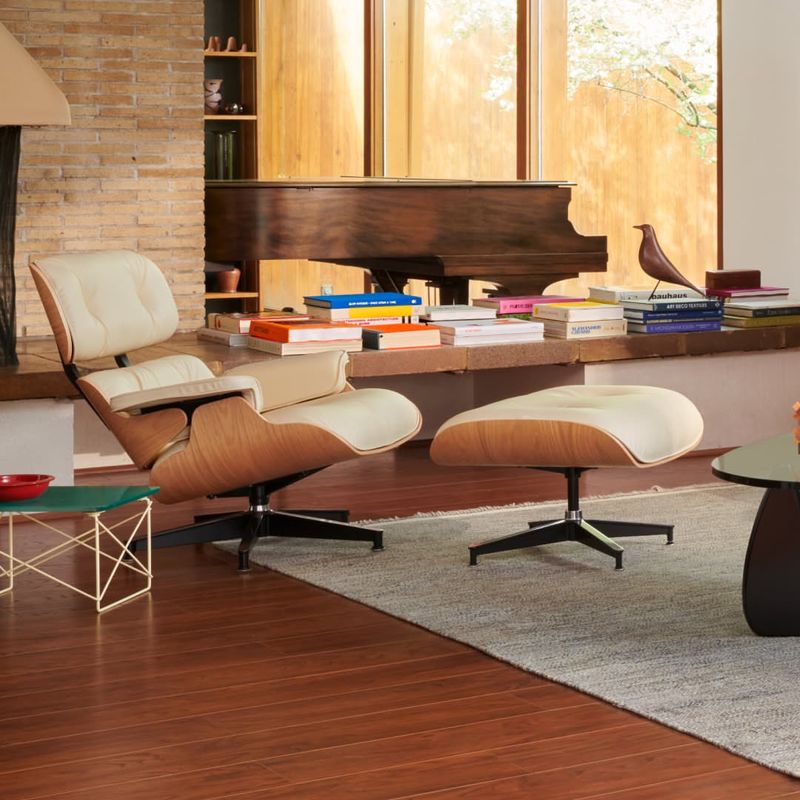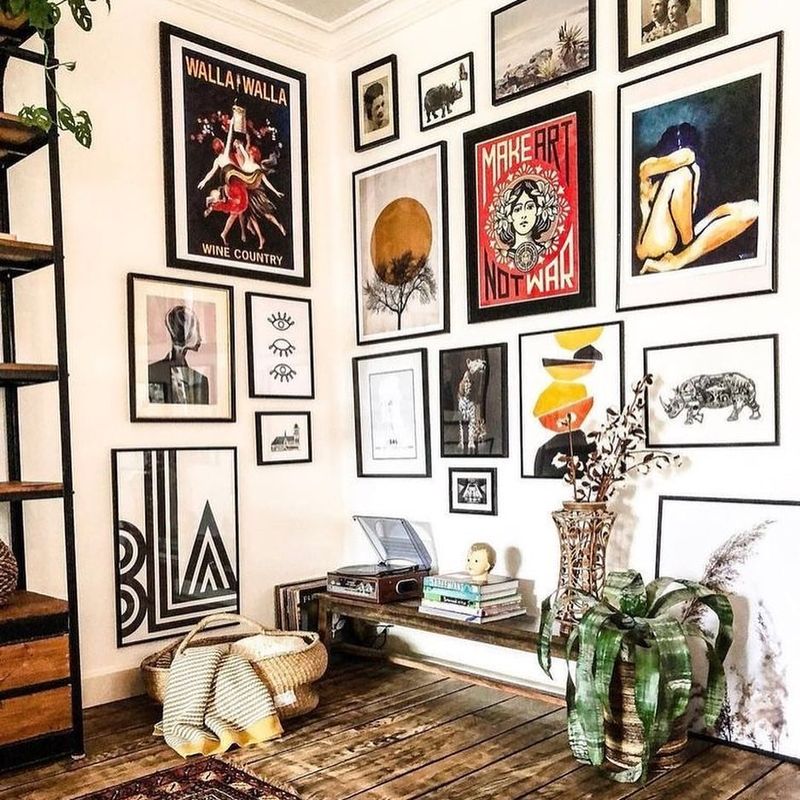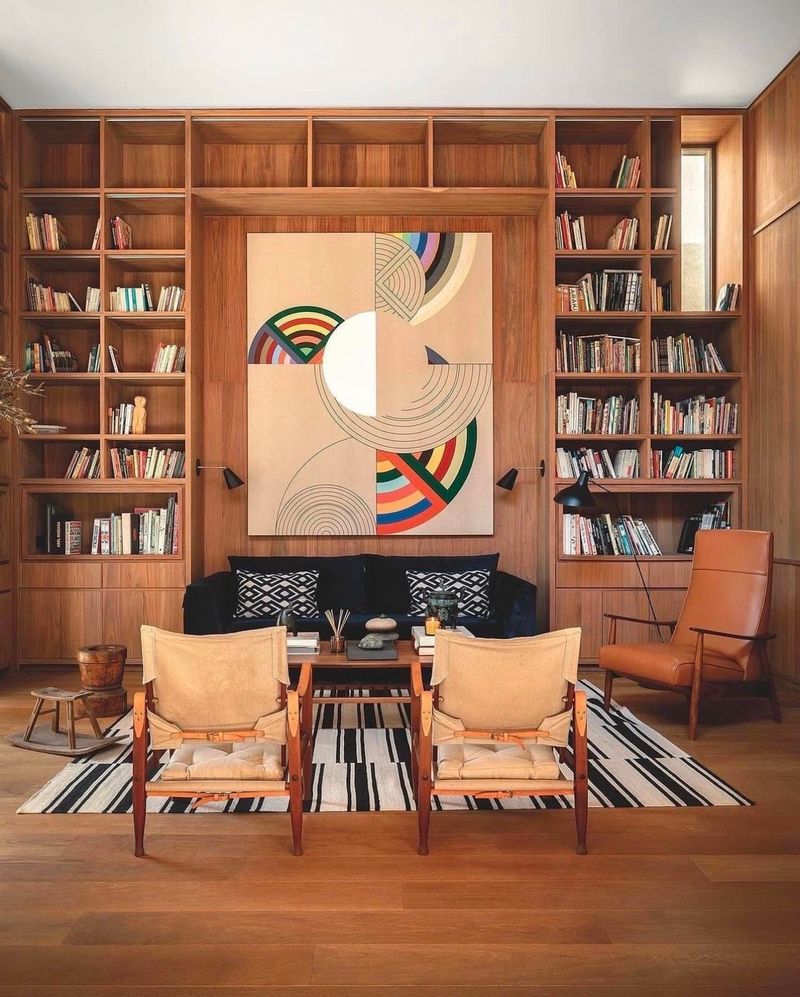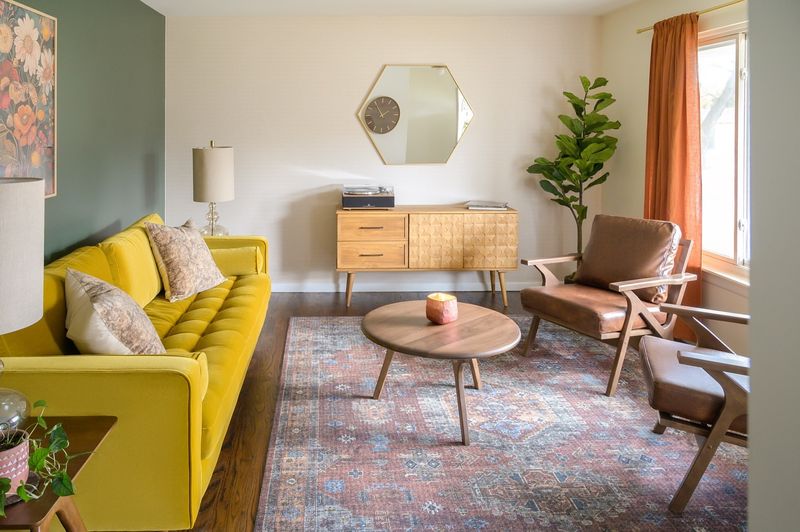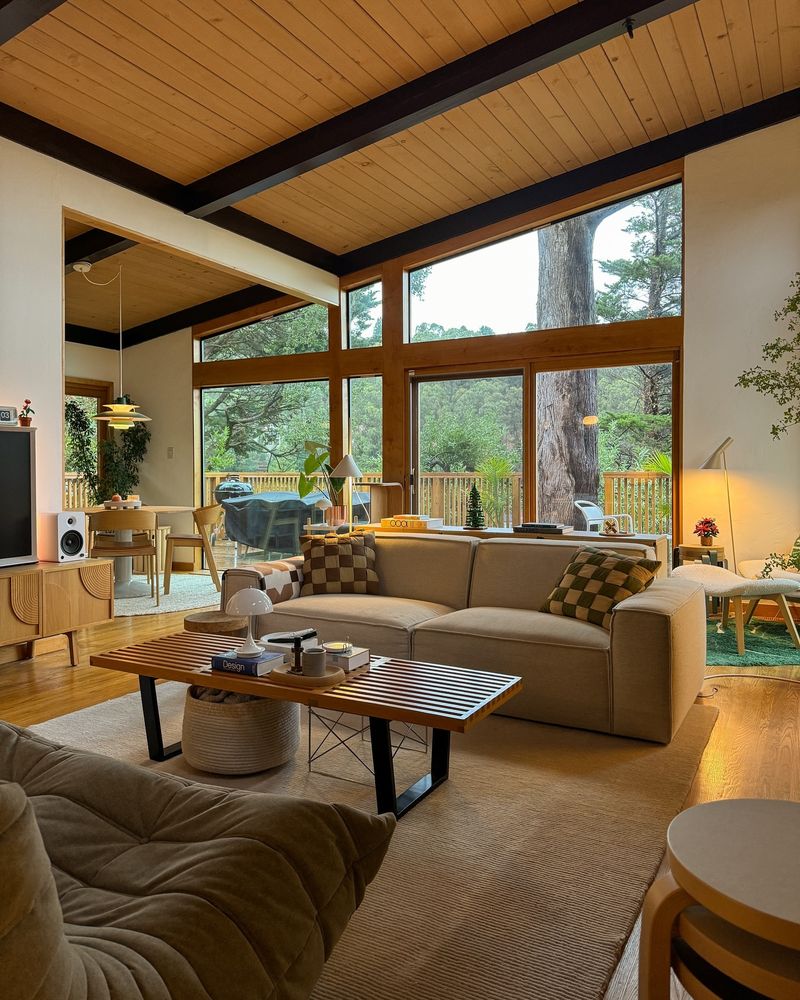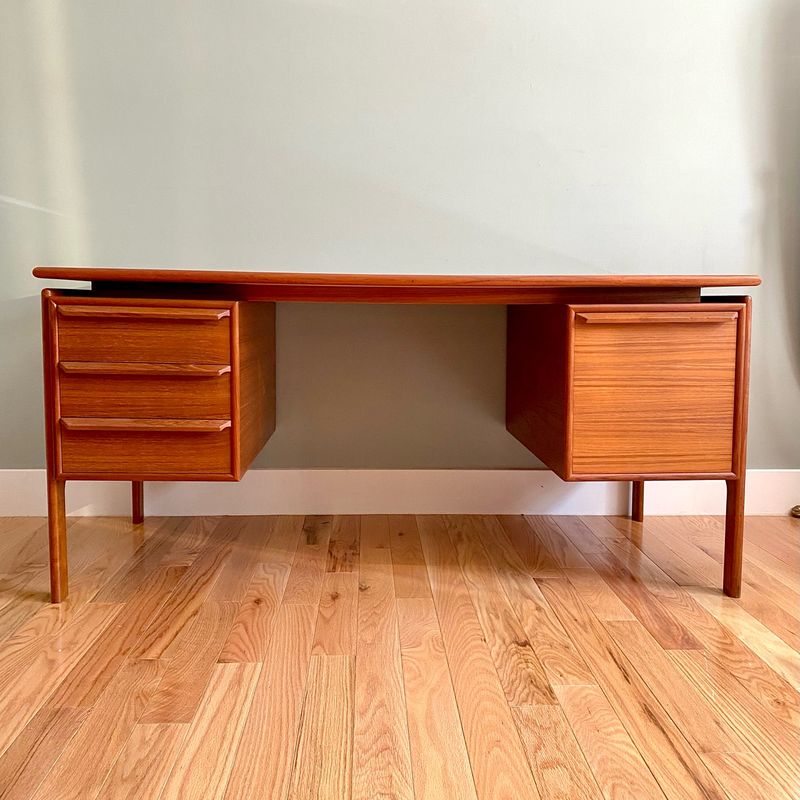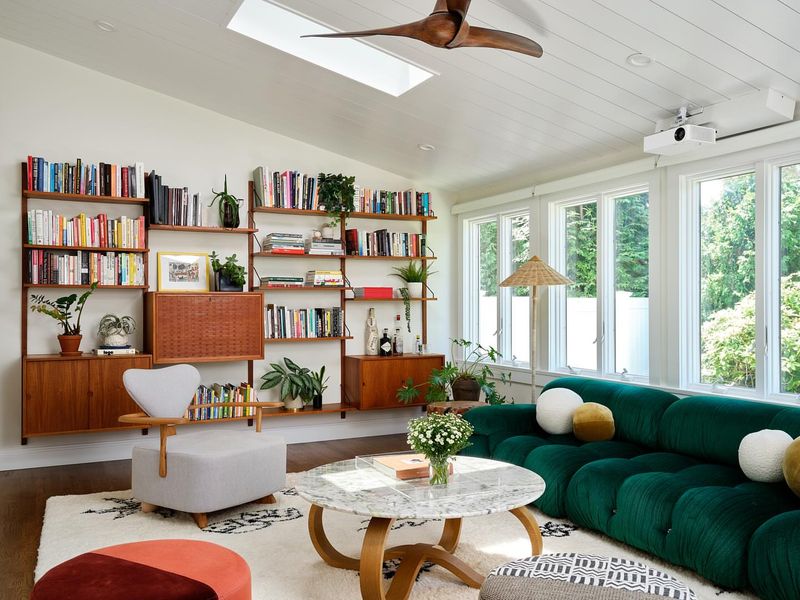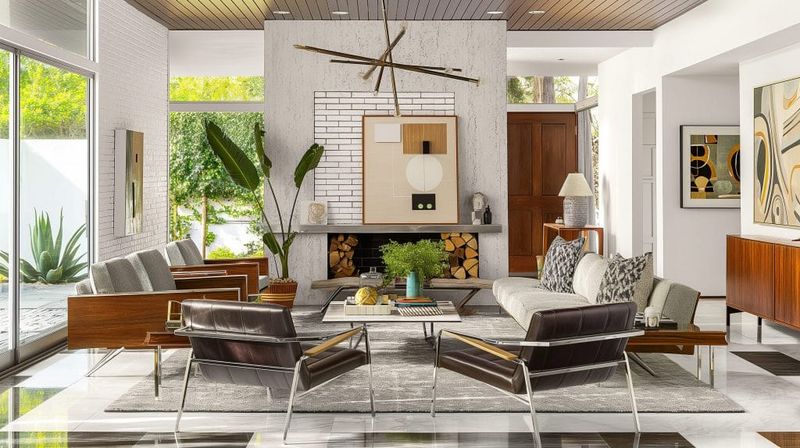Mid-century modern homes hold a special place in the architectural world, offering a unique charm that many find irresistible. Yet, these symbols of innovation and design hide more secrets than you might imagine.
What makes them so appealing, and what are the lesser-known facts about these intriguing homes? With a focus on simplicity, integration with nature, and functionality, mid-century modern homes are a perfect blend of form and function.
Get ready to explore aspects you never knew existed, and perhaps develop a newfound appreciation for these iconic structures.
1. The Unassuming Facade
You might stroll past a mid-century modern home without a second glance, mistaking it for simplicity itself. Yet, this was a deliberate design choice, emphasizing harmony with nature. The exterior often hides the charming details inside, like an unexpected treasure waiting to be discovered.
These homes are akin to humble book covers, concealing fascinating tales within. Though modest from the outside, step inside, and you’re greeted with a world of space, light, and serenity. It’s a design philosophy that challenges the ‘bigger is better’ mindset, proving that simplicity can indeed be extraordinary.
2. A Love for Nature
Imagine sipping your morning coffee while surrounded by nature’s beauty. Mid-century modern homes blur the boundaries between the indoors and outdoors, creating a seamless connection with their surroundings.
Large windows and open floor plans invite sunlight to dance across the rooms, casting warm shadows and filling spaces with life. This admiration for nature isn’t just a design feature; it reflects a lifestyle.
These homes encourage you to pause and appreciate the world outside, promoting a sense of calm and connection. It’s like living in harmony with nature’s embrace.
3. Innovative Building Materials
Mid-century modern homes pushed boundaries not just in style but in the materials used. Steel beams, glass, and concrete became the canvas for creative architectural expression. These materials enabled new structural possibilities, opening doors to imaginative design solutions.
The choice of materials reflects a bold departure from tradition, embracing innovation and experimentation. It’s a testament to the era’s willingness to explore the unknown and redefine architectural norms. What seems like a simple aesthetic choice is, in fact, a celebration of progress and ambition.
4. The Iconic Flat Roof
Roofs don’t always need to be pointy, and mid-century modern homes prove that. The flat roof isn’t just a stylistic quirk; it’s a symbol of the era’s architectural rebellion. This design choice offers a sleek, horizontal line that complements the natural landscape.
Flat roofs often incorporate functional elements like rooftop gardens or solar panels, making them more than just an aesthetic statement. It’s a creative twist that challenges conventional roofing norms, adding distinctive character to these homes. Who knew ceilings could be so stylish?
5. Inside Out: The Open Floor Plan
Walls? Who needs them! Mid-century modern homes embraced the open floor plan long before it was trendy. By removing unnecessary barriers, these homes foster a sense of unity and flow. The space becomes adaptable, encouraging creativity in how it’s used and lived in.
This layout wasn’t just about aesthetics; it was about functionality, fostering a connection between separate living areas. It’s about having the freedom to breathe and a design that responds to modern living needs. The open floor plan is a dance between form and flexibility.
6. Function Over Form
Ever wonder why everything just feels right in a mid-century modern home? It’s not magic – it’s intention. Functionality is the heartbeat of this design style, prioritizing utility without sacrificing beauty. Each piece of furniture, every layout, is crafted to serve a purpose, making daily life seamless.
Objects are more than decor; they’re part of a carefully orchestrated symphony of design. This harmonious blend of aesthetics and practicality creates a living space that feels both timeless and effortlessly chic. I’d call that living with purpose.
7. The Art of Minimalism
Less is indeed more! This design thrives on minimalist principles, focusing on clean lines and uncluttered spaces. It’s like a breath of fresh air, where every element has its place and purpose. This simplicity isn’t about absence but about clarity and sophistication.
The design strips away the unnecessary, allowing the beauty of form and function to shine. It’s a dance with restraint, where elegance emerges from simplicity. Living with less becomes an art form, embracing a lifestyle that resonates with mindfulness and intentionality.
8. The Rise of Modular
Why settle for static when you can have dynamic? Mid-century modern homes introduced modular design elements, offering flexibility and adaptability. This approach allows spaces to transform and evolve with the needs of their inhabitants.
It’s like a puzzle where pieces can be rearranged to create new forms and functions. Modular design isn’t just innovative; it’s empowering, giving homeowners the freedom to shape their environment.
9. The Power of Color
Color isn’t just an accent in mid-century modern homes but a statement. Bold, vibrant hues add personality and flair, transforming spaces into lively sanctuaries. This design embraces color as a means of expression, using it to reflect moods and themes.
It’s like painting a picture where every shade tells a story, creating harmony between the elements. The playful approach to color invites joy and creativity, making everyday life a little more exciting.
10. Eclectic Mix of Furniture
Ever felt like mixing things up? These homes embrace an eclectic mix of furniture, blending iconic designs with unique finds. This approach creates a curated look that’s both cohesive and individualistic.
It’s like a gallery of styles that come together to form a masterpiece. This mixture is a nod to creativity and individuality, encouraging personal expression and innovation in interior design.
11. Sustainability Before It Was Cool
Long before sustainability became a buzzword, mid-century modern homes were already embracing eco-friendly practices. These homes often incorporate sustainable materials and energy-efficient designs, reflecting a forward-thinking mindset.
The thoughtful use of resources and consideration for the environment make these homes timeless and responsible. It’s like a love letter to Mother Earth, where design and ecology dance in harmony.
12. The Clever Use of Space
Got a knack for making the most out of small spaces? Mid-century modern homes excel at clever space utilization, transforming even the tiniest nooks into functional areas. Innovative storage solutions and multi-purpose rooms make these homes adaptable and practical.
Reminding of a game of Tetris, every piece fits perfectly into place. This ingenuity extends beyond aesthetics, enhancing daily life with thoughtful design. By maximizing space, these homes offer a sense of comfort and efficiency.
13. Timeless Designer Pieces
Ever wanted a time machine to the past? Mid-century modern homes are filled with iconic designer pieces that have stood the test of time. These furnishings are more than just decor; they’re history, art, and innovation rolled into one.
The clean lines and functional designs of pieces like the Eames chair or Noguchi table are timeless. It’s like living in a museum where the past meets present, creating a dialogue between eras. Owning these pieces is like having a piece of history, where design and function unite.
14. Lighting as Art
No one needs a gallery when you have lighting! In mid-century modern homes, light fixtures become works of art. The creative and bold designs transform illumination into a statement, adding ambiance and flair.
The playful shapes and innovative materials used in these fixtures turn them into focal points. It’s like having a piece of sculpture hanging from the ceiling, where form and function unite to dazzle the senses. Lighting becomes a medium of expression, creating spaces that shine with creativity.
15. The Unexpected Art Nooks
Although, have you ever thought of turning a corner into an art gallery? Mid-century modern homes often feature unexpected art nooks, transforming forgotten spaces into vibrant showcases. These nooks invite you to pause and appreciate art in everyday life.
It’s fun having a mini-museum at home, where creativity finds its place. These spaces encourage individuality and expression, adding character and charm. Suddenly, every corner becomes an opportunity to surprise and delight.
16. The Allure of Built-Ins
Don’t settle for store-bought when you can go custom? The allure of built-ins in mid-century modern homes adds a touch of elegance and practicality.
These custom solutions blend seamlessly into the architecture, enhancing the home’s character. It’s like having furniture that’s tailor-made for the space, fitting like a glove.
Built-ins offer both style and functionality, maximizing storage while adding sophistication. It’s a win-win, where design meets utility, and rooms transform into personalized havens.
17. The Love for Linear
No, lines aren’t just for geometry class; they’re a passion in mid-century modern homes. The love for linear design creates a visual rhythm, adding structure and harmony.
This approach emphasizes clean, uncluttered spaces where every line serves a purpose. It’s like an architectural symphony, where lines dance across the space, guiding the eye and creating flow.
18. Playful Patterns
Bold and vibrant patterns add character and excitement, turning spaces into lively canvases. This design choice breaks the monotony, inviting fun and creativity into everyday life.
The use of patterns reflects the era’s openness to experimentation and individuality. It’s a reminder that design doesn’t have to be serious; it can be joyous and whimsical.
19. The Hidden History
Ever wondered what stories your walls could tell? Many mid-century modern homes come with a hidden history, filled with tales of the past. The architectural details carry echoes of bygone eras, adding depth and richness.
It’s like living in a piece of history, where every corner holds secrets waiting to be uncovered. The hidden history adds a layer of intrigue and allure, offering a connection to the past. It’s a journey through time, where design becomes a narrative, and homes become storytellers.
20. The Impact of Art Deco
Did someone say fusion? Mid-century modern homes often feature influences from the art deco movement, creating a unique blend of styles.
The geometric shapes and rich materials of art deco add elegance and sophistication. It’s like a marriage of design philosophies, where the past informs the present. The combination creates a dynamic visual language, adding depth and character to the space.
21. The Magic of Floating Furniture
Furniture can defy gravity. Don’t believe me? Well, in mid-century modern homes, it almost seems possible. Floating furniture designs create the illusion of weightlessness, adding a contemporary twist.
These pieces enhance spatial flow, making rooms feel open and airy. It’s like having a little magic in your living room, where furniture levitates with style. It’s about pushing boundaries and redefining traditional norms, proving that even furniture can take flight.
22. The Art of Layering
Who wants to settle for one when you can have many? The art of layering textures and materials creates depth and interest in mid-century modern homes.
This technique adds warmth and complexity, turning rooms into tactile experiences. It’s like a symphony of textures, where different elements harmoniously coexist. Layering isn’t just about aesthetics; it’s about sensory engagement and richness.
23. The Beauty of Symmetry
In mid-century modern homes, symmetry is a guiding principle. The balanced design creates harmony and visual appeal, offering a sense of calm and order.
It’s like walking into a perfectly composed piece of music, where every note is in its rightful place. It’s a dance between form and function, where equilibrium becomes the essence of beauty.

